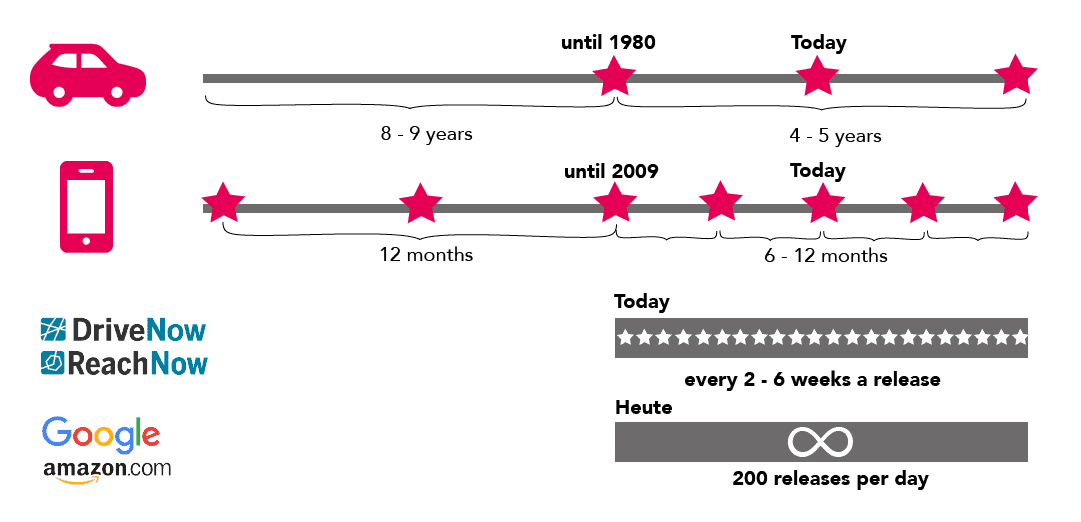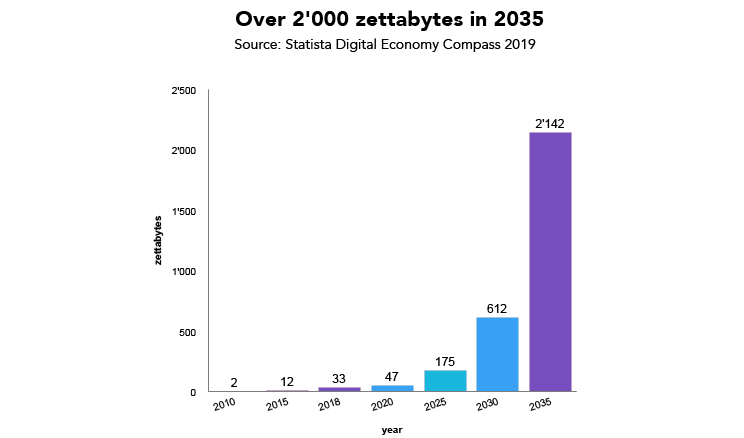How companies learn faster with insights
Digital transformation requires learning agility: Find out how insights can help you secure the future competitiveness of your company.
Corporate inertia
Disruptive markets, rapid implementation of new digital offerings, price transparency, real-time communications, information density. New markets have developed incredibly quickly thanks to digitalization and changing consumer behaviors.
An article in the German newspaper FAZ (Frankfurter Allgemeine Zeitung) describes how German companies are coping with digital transformation. German companies have already invested billions of euros in digitalization. But only to minimal effect, especially by international standards. In markets where Google, Facebook, Tesla and Uber are celebrating the success of new approaches, German companies remain static. That is true for both Germany and Switzerland. According to a study by the Institute for Applied Psychology (IAP) at the Zurich University of Applied Sciences (ZHAW), only around 25% of Swiss SMEs have a strategy for digital transformation.
The continuing development of businesses should be the responsibility of their leaders, such as CEOs, CMOs, and COOs. Instead, management boards often delegate this function to a department or project manager. Then, when they submit proposals, management responds anxiously. So there has to be a risk assessment and, by the time it’s complete, the new business models and innovative ideas have got lost in PowerPoint presentations and Excel spreadsheets. The fear that innovations could potentially cost the company customers, or undermine its own business model, prevents the management team from future-oriented decision-making. Companies get held back by corporate inertia because they don’t know how the market will respond to innovations.
The speed increases
Product development cycles have not just shortened. In the technology sector, continuous product updates are now being released at incredibly short intervals. Continuous development, rather than years of development, is now the reality.
Due to the lack of data, companies are not in a position to drive developments based on current customer needs.
Using data to shape the future
We are experiencing an explosion of data: by 2035, we will be swamped by 2,142 zettabytes of data (1 zettabyte = 1 billion terabytes)!
The future belongs to data – or those who use it to shape the future!
You need to have the right data to be able to learn from it.
Data and learning agility: Drivers of growth
The pace of innovation has accelerated; there are no longer any slumps in economic cycles. Keeping up with this change means being open-minded, in order to rethink, or question, existing paradigms.
Managers must learn to view all business, workplace and decision-making experiences, etc. as development experience in order to be prepared for change.
Many managers do not have access to the right data, and lack the learning agility required to understand and manage digital change.
Learning agility affects whether decisions are based on outdated indicators or whether current – or even future – events are also taken into consideration.
In the former case, companies can become overwhelmed by disruption, because decisions are based on outdated information. The business is flying blind.
Causes of corporate inertia
- Management delegates transformation issues down the chain
- Vague fears of the new due to lack of data
- Risk assessment based on established ideas: fear of losing existing customers or undermining the long-established business model prevents the introduction of innovations
- Decisions made while flying blind: lack of up-to-date data means that decisions are made based on outdated indicators
- Managers lack learning agility
Customer insights for further development
Today’s customers have changed – their needs are driving digital transformation. Businesses seek to create the best possible customer experience by ensuring that, at every touch point, customers receive tailored services and experience outstanding performance. In order to meet or exceed customer expectatios, companies have to make continuously improvements and adjustements.
For this to happen, managers need up-to-date transactional data about customer perceptions and opinions. The data collected is analyzed to glean insights, highlight trends, and enable managers to be proactive about introducing measures to unlock potential.
It is important to collect feedback on an ongoing basis, transactional and from relevant customer touch points – moments of truth – in order to ensure the quality of the insights.
Factsheet Transactional Feedback
Harnessing the full power of customer opinions and perceptions calls for powerful tools, which extract consistent insights from feedback. This requires comprehensive software (insights solution), which optimizes the entire insights process from a holistic perspective, evaluates data in real time and displays it in dashboards, creates targeted surveys, automates sending, and uses artificial intelligence to optimize the surveys.
If a company has implemented an insights solution, for example through its CMO, its decisions are based directly on findings from the voice of the customer. It knows the needs of its customers and can make targeted adjustments to its services, launch products or internal process improvements, or develop new offerings. Its optimizations now meet customers' expectations for performance. This allows the CMO to ensure the future sustainability of the company’s products and services.
Continuous improvement of the customer experience can only be achieved with high-quality data about customer interactions.

